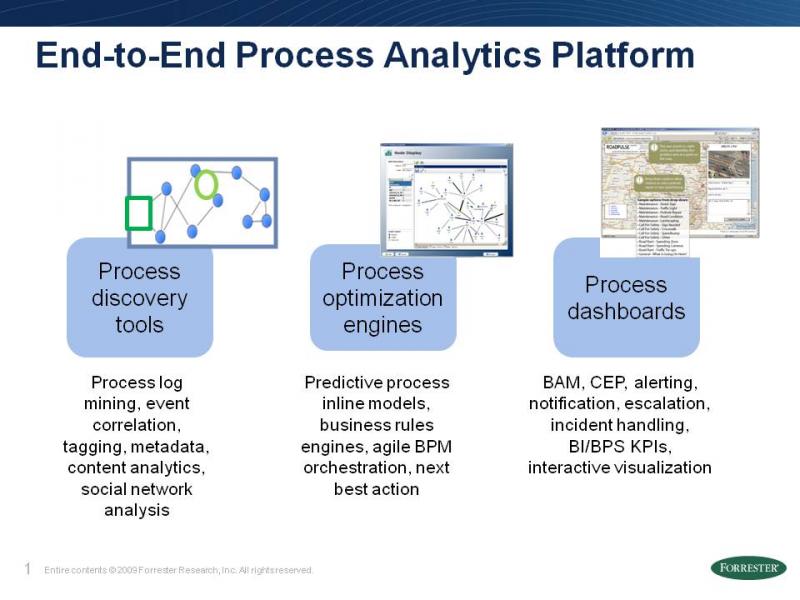Harnessing Real-time Process Analytics: Forrester Analyst Video Jam Session and ITF Look-Ahead
What do you need for a full-featured process analytics platform? My Forrester colleague Clay Richardson and I discussed this topic in a recent video podcast, which we have posted on YouTube. Please look at this and tell us what you think. If you’re a Forrester customer, we would also love to see you next month, May 26-28, at the Forrester Information Technology Forum (ITF) in Las Vegas, where Clay and I will be exploring this topic on a panel session with colleagues Boris Evelson and Craig Le Clair.
Here’s a little peek ahead at what I plan to discuss in next month’s IT panel, which will extend upon the remarks in the video podcast as well as my musings in a blogpost from a few months ago. As I noted before, process analytics is all about identifying what works and doesn’t work. The first order of business for us is to identify the full range of enabling infrastructure and tools for tracking, exploring, and analyzing a wide range of workflows. It should support optimization of processes based both on historical metrics and on fresh streams of up-to-the-second key performance indicators (KPIs). And it should provide reports, dashboards, and other views and tools adapted to each role performed by each stakeholder in a business process.
Consequently, a process analytics platform should leverage tools and best practices in business process management (BPM), business activity monitoring (BAM), business intelligence (BI), business rules engines (BRE),predictive analytics and data mining (PA-DM), and complex event processing (CEP). The following graphic shows a high-level reference architecture for a process analytics platform:

Taken together, these functional components support lean, agile, predictive processes, such as next best action and customer experience optimization.
See you next month!